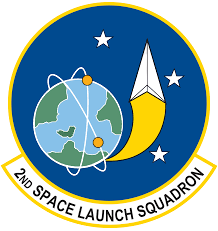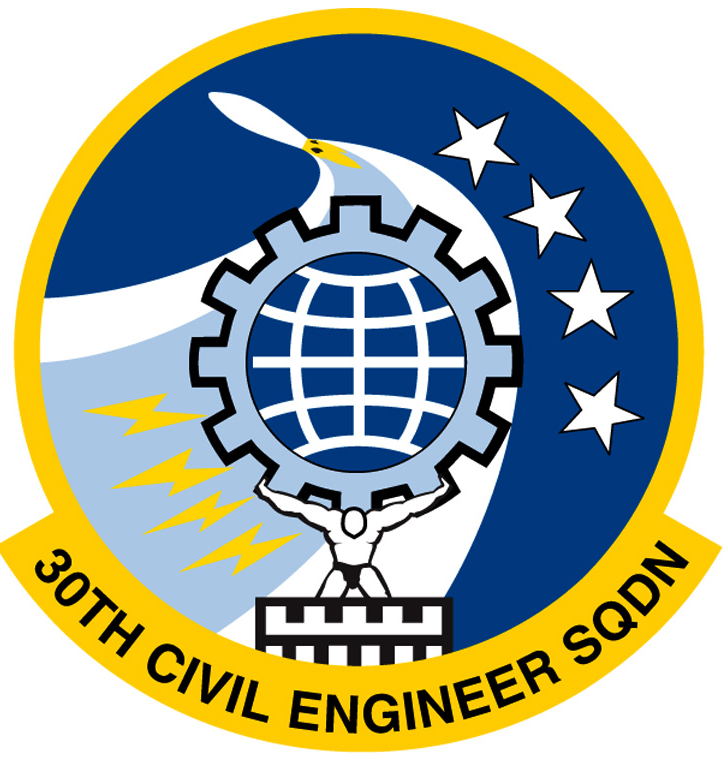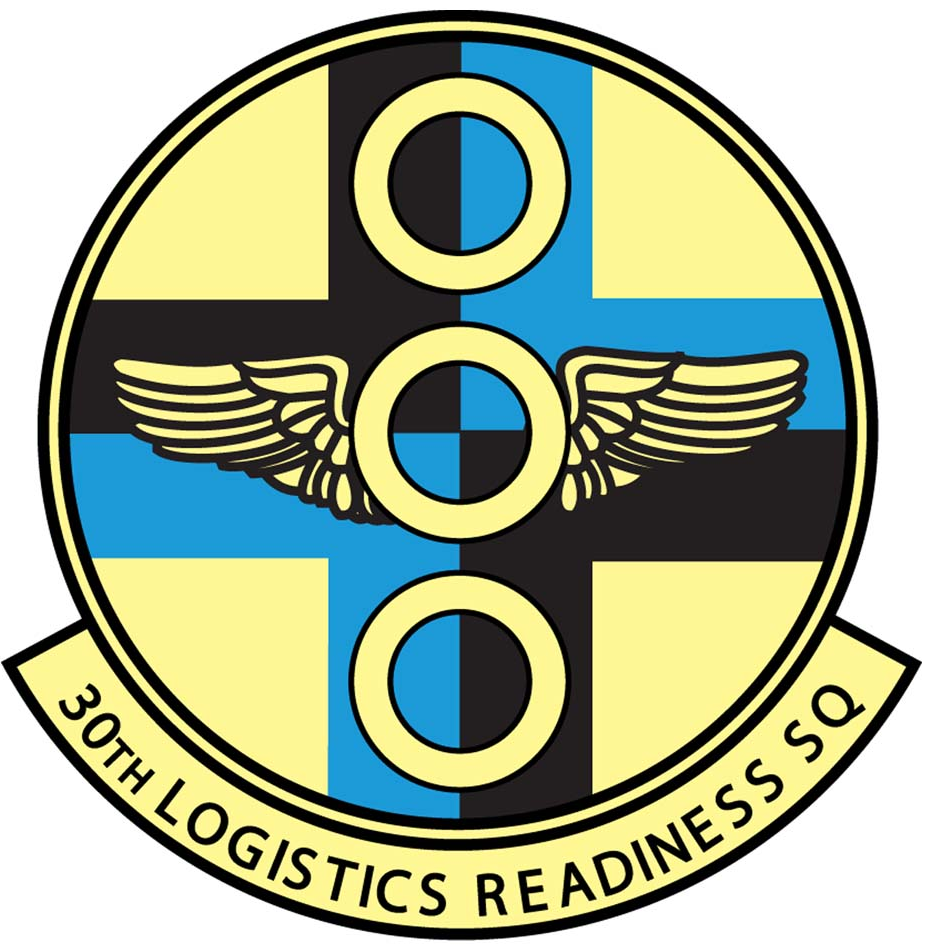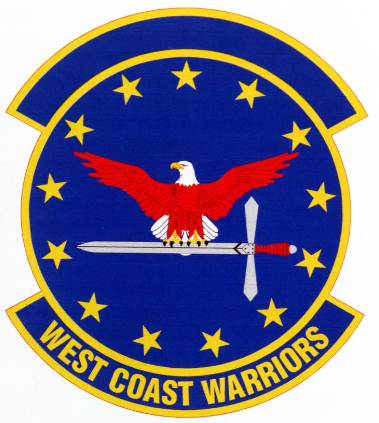Western Space And Missile Center on:
[Wikipedia]
[Google]
[Amazon]
Space Launch Delta 30 (SLD 30) is a

 2nd Range Operations Squadron (2 ROPS)
*
2nd Range Operations Squadron (2 ROPS)
* 2nd Space Launch Squadron (2 SLS)
*
2nd Space Launch Squadron (2 SLS)
* 30th Operations Support Squadron (30 OSS)
*
30th Operations Support Squadron (30 OSS)
* 30th Space Communications Squadron (30 SCS)
30th Space Communications Squadron (30 SCS)

 30th Civil Engineer Squadron (30 CES)
*
30th Civil Engineer Squadron (30 CES)
* 30th Contracting Squadron (30 CONS)
* 30th Force Support Squadron (30 FSS)
*
30th Contracting Squadron (30 CONS)
* 30th Force Support Squadron (30 FSS)
* 30th Logistics Readiness Squadron (30 LRS)
*
30th Logistics Readiness Squadron (30 LRS)
* 30th Security Forces Squadron (30 SFS)
30th Security Forces Squadron (30 SFS)
 30th Medical Group (30 MDG)
* 30th Healthcare Operations Squadron (30 HCOS)
* 30th Operational Medical Readiness Squadron (30 OMRS)
30th Medical Group (30 MDG)
* 30th Healthcare Operations Squadron (30 HCOS)
* 30th Operational Medical Readiness Squadron (30 OMRS)
 30th Comptroller Squadron (30 CPTS)
30th Comptroller Squadron (30 CPTS)
 The 30th Space Wing shield was approved for use on 13 March 1995. The blue and yellow in the shield are the Air Force's colors, which the wing was a part of when the shield was created. The blue alludes to the sky, while the Yellow refers to the sun and the excellence required of its personnel. The two launch vehicles emanating from behind the globe represent the 30th Space Wing's intercontinental ballistic missile test and space launch missions. The remaining red, white, and blue elements represent the national colors of the United States.
The 30th Space Wing shield was approved for use on 13 March 1995. The blue and yellow in the shield are the Air Force's colors, which the wing was a part of when the shield was created. The blue alludes to the sky, while the Yellow refers to the sun and the excellence required of its personnel. The two launch vehicles emanating from behind the globe represent the 30th Space Wing's intercontinental ballistic missile test and space launch missions. The remaining red, white, and blue elements represent the national colors of the United States.
 The Air Force Western Test Range (AFWTR) was established on 15 May 1964. Initially organized as part of
The Air Force Western Test Range (AFWTR) was established on 15 May 1964. Initially organized as part of
United States Space Force
The United States Space Force (USSF) is the space service branch of the U.S. Armed Forces, one of the eight U.S. uniformed services, and the world's only independent space force. Along with its sister branch, the U.S. Air Force, the Space ...
space launch delta assigned to Space Systems Command
Space Systems Command (SSC) is the United States Space Force's space development, acquisition, launch, and logistics field command. It is headquartered at Los Angeles Air Force Base, California and manages the United States' space launch ra ...
and headquartered at Vandenberg Space Force Base
Vandenberg Space Force Base , previously Vandenberg Air Force Base, is a United States Space Force Base in Santa Barbara County, California. Established in 1941, Vandenberg Space Force Base is a space launch base, launching spacecraft from th ...
, California. The Space Launch Delta 30 is responsible for all space launch operations from the west coast West Coast or west coast may refer to:
Geography Australia
* Western Australia
*Regions of South Australia#Weather forecasting, West Coast of South Australia
* West Coast, Tasmania
**West Coast Range, mountain range in the region
Canada
* Britis ...
, which includes all polar launches. It manages the Western Range and launch activities for the Space Force, Department of Defense, NASA
The National Aeronautics and Space Administration (NASA ) is an independent agency of the US federal government responsible for the civil space program, aeronautics research, and space research.
NASA was established in 1958, succeeding t ...
, and other private space corporations. The Space Launch Delta 30 also supports test and evaluation launches of the U.S. Air Force's intercontinental ballistic missile force.
Operations
The Space Launch Delta 30 is one of two space launch wings for the U.S. Space Force, being responsible for executing military, intelligence, civil, and commercial space launches using the Western Range. Primary launch vehicles include theAtlas V
Atlas V is an expendable launch system and the fifth major version in the Atlas (rocket family), Atlas launch vehicle family. It was originally designed by Lockheed Martin, now being operated by United Launch Alliance (ULA), a joint venture be ...
, Delta IV
Delta IV is a group of five expendable launch systems in the Delta (rocket family), Delta rocket family introduced in the early 2000s. Originally designed by Boeing's Defense, Space and Security division for the National Security Space Launch, ...
, Pegasus
Pegasus ( grc-gre, Πήγασος, Pḗgasos; la, Pegasus, Pegasos) is one of the best known creatures in Greek mythology. He is a winged divine stallion usually depicted as pure white in color. He was sired by Poseidon, in his role as hor ...
, Minotaur
In Greek mythology, the Minotaur ( , ;. grc, ; in Latin as ''Minotaurus'' ) is a mythical creature portrayed during classical antiquity with the head and tail of a bull and the body of a man or, as described by Roman poet Ovid, a being "pa ...
, and Falcon
Falcons () are birds of prey in the genus ''Falco'', which includes about 40 species. Falcons are widely distributed on all continents of the world except Antarctica, though closely related raptors did occur there in the Eocene.
Adult falcons ...
rockets. It also supports Air Force Global Strike Command ballistic missile tests and evaluation and Missile Defense Agency test and operations.
The Space Launch Delta 30 serves as the host wing for Vandenberg Space Force Base
Vandenberg Space Force Base , previously Vandenberg Air Force Base, is a United States Space Force Base in Santa Barbara County, California. Established in 1941, Vandenberg Space Force Base is a space launch base, launching spacecraft from th ...
, providing base support for the Space Force
A space force is a military branch of a nation's armed forces that conducts military operations in outer space and space warfare. The world's first space force was the Russian Space Forces, established in 1992 as an independent military service. ...
's Space Operations Command
Space Operations Command (SpOC) is the United States Space Force's space operations, cyber operations, and intelligence field command. It is headquartered at Peterson Space Force Base, Colorado and serves as the U.S. Space Force's service com ...
and its Space Delta 5
Space Delta 5 (DEL 5) is a United States Space Force unit responsible for preparing, presenting, and fighting assigned and attached forces for the purpose of conducting operational-level command and control (C2) of space forces to achieve theate ...
, and the Space Delta 6
Space Delta 6 (DEL 6) is a United States Space Force unit which assures access to space through the $6.8 billion Satellite Control Network and defensive cyberspace capabilities for space mission systems.
Activated on 24 July 2020, the delta is ...
's 21st Space Operations Squadron
The 21st Space Operations Squadron (21 SOPS) is a satellite control unit of the Space Delta 6 of the United States Space Force, located at Vandenberg Space Force Base, California. Prior to July 2020, it was part of the 50th Network Operations Gro ...
. The Space Launch Delta 30 also provides support to non-Space Force units, such as the Air Force
An air force – in the broadest sense – is the national military branch that primarily conducts aerial warfare. More specifically, it is the branch of a nation's armed services that is responsible for aerial warfare as distinct from an a ...
's 532d Training Squadron
The 532d Training Squadron is a United States Air Force unit, assigned to the 82nd Training Group at Vandenberg Space Force Base, California. The squadron was first activated in 1942 as the 532d Bombardment Squadron. After training in the Unit ...
and 576th Flight Test Squadron
The 576th Flight Test Squadron is a United States Air Force unit assigned to Air Force Global Strike Command. The 576th is stationed at Vandenberg Space Force Base, California. The unit was first established in January 1943 as the 576th Bomba ...
, Space Command
A space command is a military organization with responsibility for space operations and warfare. A space command is typically a joint organization or organized within a larger military branch and is distinct from a fully independent space force. ...
's Combined Force Space Component Command
The Combined Force Space Component Command (CFSCC) is a U.S.-led multinational subordinate command of United States Space Command. It is responsible for tactical control of American and multinational space forces. The CFSCC's mission is to "plan, ...
and Combined Space Operations Center
The Combined Space Operations Center (CSpOC) is a U.S.–led multinational space operations center that provides command and control of space forces for United States Space Command's Combined Force Space Component Command. The CSpOC is located at ...
, and elements of the Missile Defense Agency
The Missile Defense Agency (MDA) is the section of the United States government's Department of Defense responsible for developing a layered defense against ballistic missiles. It had its origins in the Strategic Defense Initiative (SDI) which ...
, National Reconnaissance Office
The National Reconnaissance Office (NRO) is a member of the United States Intelligence Community and an agency of the United States Department of Defense which designs, builds, launches, and operates the reconnaissance satellites of the U.S. f ...
, and NASA
The National Aeronautics and Space Administration (NASA ) is an independent agency of the US federal government responsible for the civil space program, aeronautics research, and space research.
NASA was established in 1958, succeeding t ...
.
Structure

30th Operations Group
The 30th Operations Group (30 OG) was a group of the United States Space Force. It was assigned to the 30th Space Wing, stationed at Vandenberg Air Force Base, California. It was responsible for all space launch operations from the West Coast of ...
(30 OG)
* 2nd Range Operations Squadron (2 ROPS)
*
2nd Range Operations Squadron (2 ROPS)
* 2nd Space Launch Squadron (2 SLS)
*
2nd Space Launch Squadron (2 SLS)
* 30th Space Communications Squadron (30 SCS)
30th Space Communications Squadron (30 SCS)

30th Mission Support Group
The 30th Mission Support Group was a support group of the United States Air Force, and later United States Space Force, part of the 30th Space Wing at Vandenberg Air Force Base, California. The group's predecessor, the 4392nd Aerospace Support G ...
(30 MSG)
* 30th Civil Engineer Squadron (30 CES)
*
30th Civil Engineer Squadron (30 CES)
* 30th Contracting Squadron (30 CONS)
* 30th Force Support Squadron (30 FSS)
*
30th Contracting Squadron (30 CONS)
* 30th Force Support Squadron (30 FSS)
* 30th Logistics Readiness Squadron (30 LRS)
*
30th Logistics Readiness Squadron (30 LRS)
* 30th Security Forces Squadron (30 SFS)
30th Security Forces Squadron (30 SFS)
 30th Medical Group (30 MDG)
* 30th Healthcare Operations Squadron (30 HCOS)
* 30th Operational Medical Readiness Squadron (30 OMRS)
30th Medical Group (30 MDG)
* 30th Healthcare Operations Squadron (30 HCOS)
* 30th Operational Medical Readiness Squadron (30 OMRS)
Shield
 The 30th Space Wing shield was approved for use on 13 March 1995. The blue and yellow in the shield are the Air Force's colors, which the wing was a part of when the shield was created. The blue alludes to the sky, while the Yellow refers to the sun and the excellence required of its personnel. The two launch vehicles emanating from behind the globe represent the 30th Space Wing's intercontinental ballistic missile test and space launch missions. The remaining red, white, and blue elements represent the national colors of the United States.
The 30th Space Wing shield was approved for use on 13 March 1995. The blue and yellow in the shield are the Air Force's colors, which the wing was a part of when the shield was created. The blue alludes to the sky, while the Yellow refers to the sun and the excellence required of its personnel. The two launch vehicles emanating from behind the globe represent the 30th Space Wing's intercontinental ballistic missile test and space launch missions. The remaining red, white, and blue elements represent the national colors of the United States.
History
Air Force Western Test Range (1964–1970)
 The Air Force Western Test Range (AFWTR) was established on 15 May 1964. Initially organized as part of
The Air Force Western Test Range (AFWTR) was established on 15 May 1964. Initially organized as part of Air Force Systems Command
The Air Force Systems Command (AFSC) is an inactive United States Air Force Major Command. It was established in April 1951, being split off from Air Materiel Command. The mission of AFSC was Research and Development for new weapons systems.
Ove ...
's National Range Division, the Air Force Western Test Range managed all space and missile launches from the West Coast of the United States
The West Coast of the United States, also known as the Pacific Coast, Pacific states, and the western seaboard, is the coastline along which the Western United States meets the North Pacific Ocean. The term typically refers to the contiguous U.S ...
, which primarily were launched from Vandenberg Air Force Base Vandenberg may refer to:
* Vandenberg (surname), including a list of people with the name
* USS General Harry Taylor (AP-145), USNS ''General Hoyt S. Vandenberg'' (T-AGM-10), transport ship in the United States Navy, sank as an artificial reef in K ...
. The AFWTR established a network of instrumentation sites along the California coast and in the Pacific islands to monitor ballistic missile and space launches in its region, although actual launches were conducted by the Space Systems Division's 6595th Aerospace Test Wing.
On 1 April 1970 the Air Force Western Test Range was inactivated, as the responsibility for managing the range was passed to the Space and Missile Systems Organization
Space Systems Command (SSC) is the United States Space Force's space development, acquisition, launch, and logistics field command. It is headquartered at Los Angeles Air Force Base, California and manages the United States' space launch ...
's Space and Missile Test Center.
Western Space and Missile Center (1979–1991)
In 1979 the Space and Missile Test Center was reorganized, becoming the Space and Missile Test Organization and the Air Force Western Test Range was reestablished on 1 October 1970 as the Western Space and Missile Center (WSMC), replacing the 6595th Aerospace Test Wing. Organized under the new center were the 6595th Aerospace Test Group, 6595th Test and Evaluation Group, and the 6595th Shuttle Test Group. Initially designated as the 6595th Satellite Test Group, the 6595th Aerospace Test Group managed space launches from Vandenberg Air Force Base. The 6595th Test and Evaluation Group was initially designated as the 6595th Missile Test Group, performing missile tests for theLGM-118 Peacekeeper
The LGM-118 Peacekeeper, originally known as the MX for "Missile, Experimental", was a MIRV-capable intercontinental ballistic missile (ICBM) produced and deployed by the United States from 1985 to 2005. The missile could carry up to twelve Mark ...
and LGM-30 Minuteman
The LGM-30 Minuteman is an American land-based intercontinental ballistic missile (ICBM) in service with the Air Force Global Strike Command. , the LGM-30G Minuteman III version is the only land-based ICBM in service in the United States and r ...
intercontinental ballistic missiles. Initially planned to serve as an alternate launch and landing location for the Space Shuttle
The Space Shuttle is a retired, partially reusable low Earth orbital spacecraft system operated from 1981 to 2011 by the U.S. National Aeronautics and Space Administration (NASA) as part of the Space Shuttle program. Its official program na ...
, the 6595th Shuttle Group was intended to prepare facilities for its operations, before shuttle operations from Vandenberg AFB were canceled in 1987.
On 1 October 1979 the Space and Missile Test Organization was inactivated and the Western Space and Missile Center was directly subordinated to the Space Systems Division. A year later Air Force Systems Command began to transition the space launch mission to Air Force Space Command
The atmosphere of Earth is the layer of gases, known collectively as air, retained by Earth's gravity that surrounds the planet and forms its planetary atmosphere. The atmosphere of Earth protects life on Earth by creating pressure allowing for ...
. On 1 October 1990 the Western Space and Missile Systems Center transferred to Air Force Space Command's 9th Space Division
The 9th Space Division (9th SD) is an inactive United States Air Force organization. Its last assignment was with Air Force Space Command, being stationed at Patrick Air Force Base, Florida. It was inactivated on 1 October 1991.
History Tactical ...
. Vandenberg Air Force Base had been a Strategic Air Command
Strategic Air Command (SAC) was both a United States Department of Defense Specified Command and a United States Air Force (USAF) Major Command responsible for command and control of the strategic bomber and intercontinental ballistic missile ...
installation until 15 January 1991, when it became an Air Force Space Command base, with the Western Space and Missile Systems Center as the host organization. After the 9th Space Division was inactivated on 1 October 1991, the Western Space and Missile Systems Center directly reported to Air Force Space Command.
30th Space Wing (1991–2021)
On 19 November 1991, as part of a larger Air Force heritage initiative, the Western Space and Missile Center was redesignated as the 30th Space Wing (30 SW), with the30th Operations Group
The 30th Operations Group (30 OG) was a group of the United States Space Force. It was assigned to the 30th Space Wing, stationed at Vandenberg Air Force Base, California. It was responsible for all space launch operations from the West Coast of ...
assuming the lineage of the World War II
World War II or the Second World War, often abbreviated as WWII or WW2, was a world war that lasted from 1939 to 1945. It involved the vast majority of the world's countries—including all of the great powers—forming two opposin ...
-era 30th Bombardment Group (Heavy). The Western Test Range was also renamed as the Western Range, to emphasize its operational nature. On 1 July 1993 the 30th Space Wing was assigned to the newly-reactivated Fourteenth Air Force
The Fourteenth Air Force (14 AF; Air Forces Strategic) was a numbered air force of the United States Air Force Space Command (AFSPC). It was headquartered at Vandenberg Air Force Base, California.
The command was responsible for the organizatio ...
.
On 1 December 2003 the 30th Launch Group
The 30th Launch Group was a United States Air Force unit, and was assigned to the 30th Space Wing, Vandenberg AFB
Vandenberg Space Force Base , previously Vandenberg Air Force Base, is a United States Space Force Base in Santa Barbara Cou ...
was activated to manage launch operations. On 20 July 2018 the 30th Launch Group was reemerged with the 30th Operations Group in an effort to streamline Air Force Space Command organizations.
On 20 December 2019 the 30th Space Wing, along with the rest of Air Force Space Command became part of the United States Space Force
The United States Space Force (USSF) is the space service branch of the U.S. Armed Forces, one of the eight U.S. uniformed services, and the world's only independent space force. Along with its sister branch, the U.S. Air Force, the Space ...
. The Fourteenth Air Force was redesignated as Space Operations Command
Space Operations Command (SpOC) is the United States Space Force's space operations, cyber operations, and intelligence field command. It is headquartered at Peterson Space Force Base, Colorado and serves as the U.S. Space Force's service com ...
, which the 30th Space Wing remained assigned to.
Space Launch Delta 30 (2021–present)
Upon the activation ofSpace Systems Command
Space Systems Command (SSC) is the United States Space Force's space development, acquisition, launch, and logistics field command. It is headquartered at Los Angeles Air Force Base, California and manages the United States' space launch ra ...
, the 30th Space Wing was transferred over from Space Operations Command
Space Operations Command (SpOC) is the United States Space Force's space operations, cyber operations, and intelligence field command. It is headquartered at Peterson Space Force Base, Colorado and serves as the U.S. Space Force's service com ...
and was renamed as Space Launch Delta 30.
List of commanders
References
{{USAF Space Command Wings of the United States Space Force Military units and formations in California Military units and formations established in 1964 Deltas of the United States Space Force